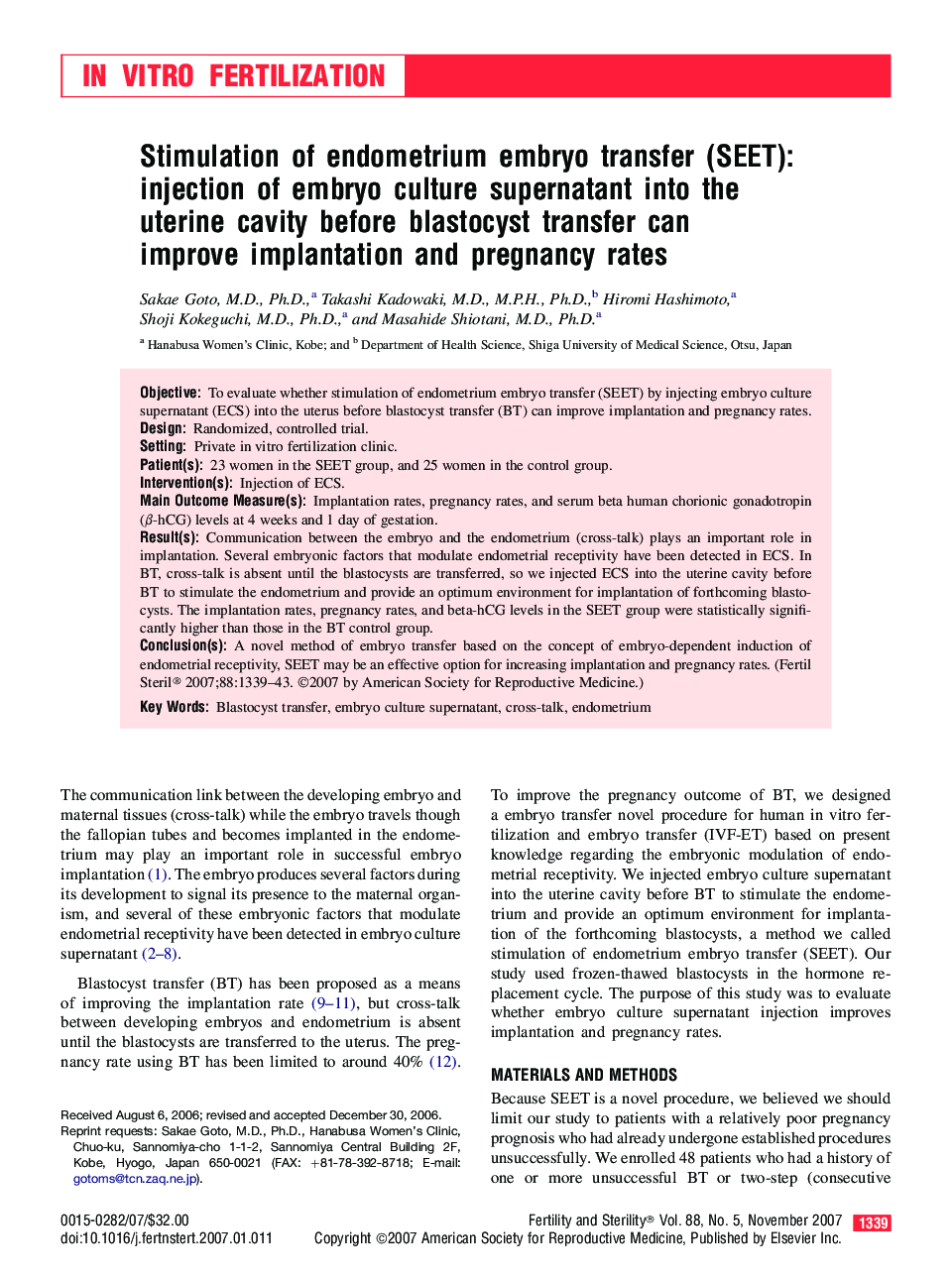| Article ID | Journal | Published Year | Pages | File Type |
|---|---|---|---|---|
| 3941943 | Fertility and Sterility | 2007 | 5 Pages |
ObjectiveTo evaluate whether stimulation of endometrium embryo transfer (SEET) by injecting embryo culture supernatant (ECS) into the uterus before blastocyst transfer (BT) can improve implantation and pregnancy rates.DesignRandomized, controlled trial.SettingPrivate in vitro fertilization clinic.Patient(s)23 women in the SEET group, and 25 women in the control group.Intervention(s)Injection of ECS.Main Outcome Measure(s)Implantation rates, pregnancy rates, and serum beta human chorionic gonadotropin (β-hCG) levels at 4 weeks and 1 day of gestation.Result(s)Communication between the embryo and the endometrium (cross-talk) plays an important role in implantation. Several embryonic factors that modulate endometrial receptivity have been detected in ECS. In BT, cross-talk is absent until the blastocysts are transferred, so we injected ECS into the uterine cavity before BT to stimulate the endometrium and provide an optimum environment for implantation of forthcoming blastocysts. The implantation rates, pregnancy rates, and beta-hCG levels in the SEET group were statistically significantly higher than those in the BT control group.Conclusion(s)A novel method of embryo transfer based on the concept of embryo-dependent induction of endometrial receptivity, SEET may be an effective option for increasing implantation and pregnancy rates.
